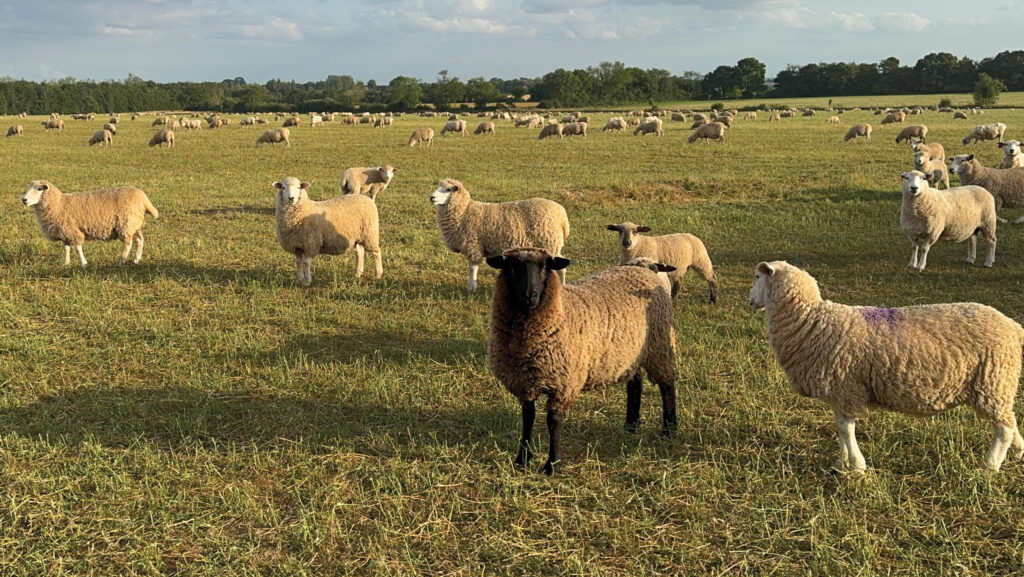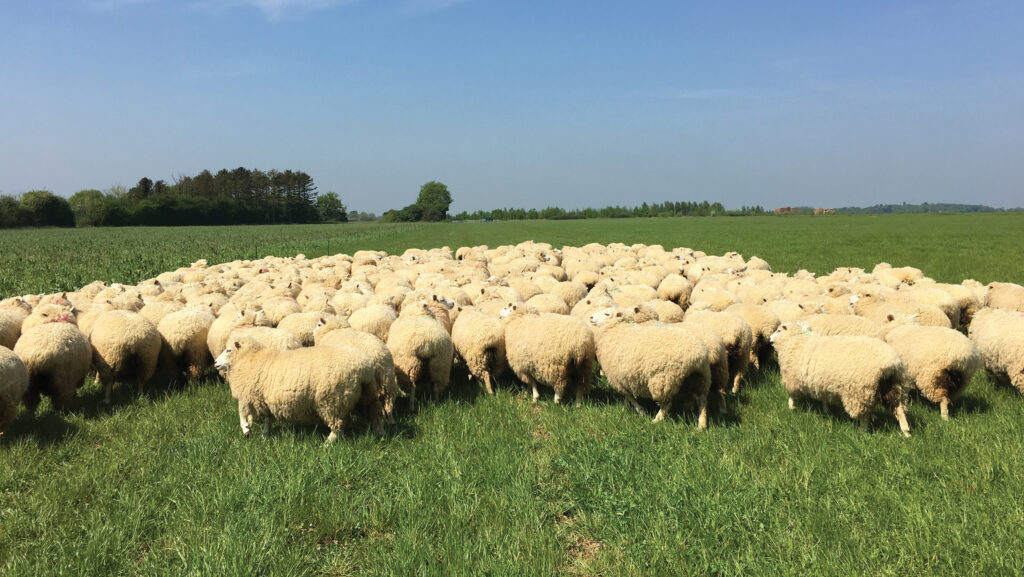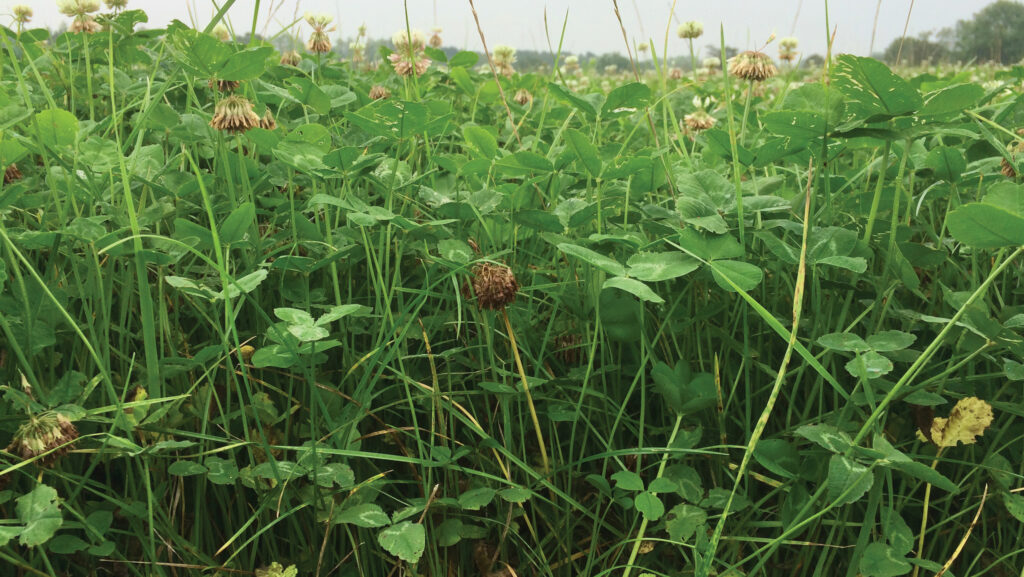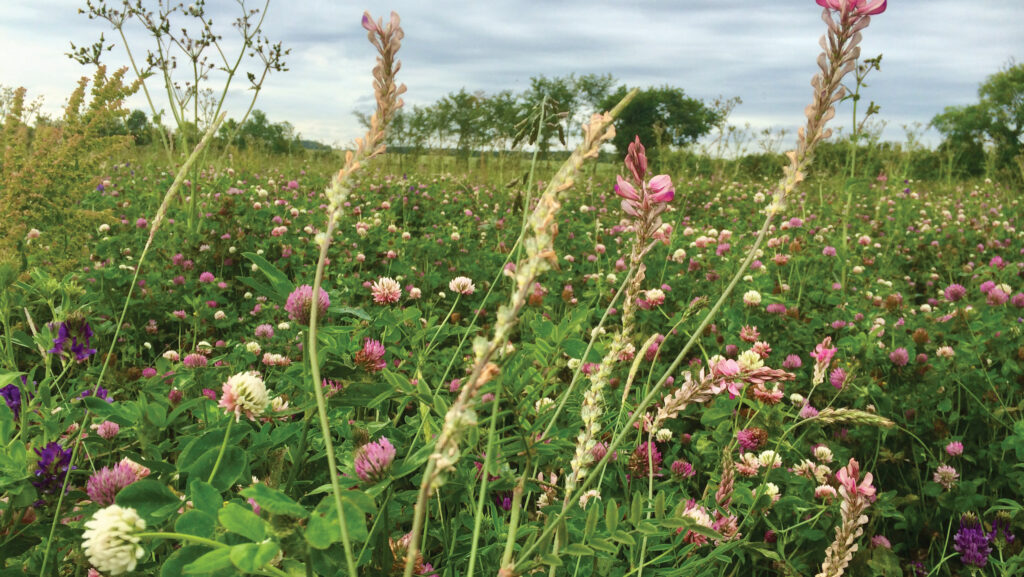Why organic farmer cut back sheep to improve wheat yields
 © Shimpling Park Farm
© Shimpling Park Farm Sheep numbers are set to be considerably cut back to promote arable yields at organic farmer John Pawsey’s farm in Suffolk.
A decade of yield data revealed a 0.5t/ha winter wheat yield loss, following a two-year fertility building ley grazed by sheep, compared with a single-year ley that was not grazed.
A combination of compaction from overgrazing and a lock-up in nutrients due to the ligneous nature of the two-year grass and clover ley is thought to have contributed to the loss.
See also: Grower phases out herbicides in favour of mechanical weeding
Ruthless business decision
Given the findings, John and wife Alice made the ruthless decision to cut back numbers of their 1000-head New Zealand Romney flock to just 200.
“We took a long hard look at the enterprise and realised that, for our system and soil type, we were finding it increasingly difficult to justify such high flock numbers,” says John.
“The mechanism of constantly moving sheep to avoid compaction, fencing and moving mobile water troughs was not worth the time and money spent on it.”
Sheep have been on the farm for 10 years. Initially, land was let to a grazier but this was later taken in-house to gain more control over sheep management and grazing timings.
Two-sixths of the 650ha farm were down to grass and clover fertility building leys, grazed by the sheep, providing entry to the following winter wheat crop.
However, the farm’s handslope clay soils (35-40% clay content) proved difficult to rotate 1,000 ewes without soil compaction risks. This was beginning to have a negative impact on the organic arable rotation.

Ewes on two-year fertility ley © Shimpling Park Farm
A clear difference
John compared the decade of winter wheat yield records after the two-year grass and clover ley grazed by sheep, and the one-year clover rich ley.
He found winter wheat yields experienced a 0.5t/ha yield loss following the two-year fertility building ley.
Each land block had undergone the same four-year cash crop rotation.
“You could clearly see the wheat looked different after the two-year ley grazed by the sheep. Crops looked hungry in comparison to the one year ley, which had lush and green wheat crops.”
John believes the ligneous nature of the ryegrass was more difficult for the soil to breakdown compared with the legume-rich ley, which he describes as “breaking down rapidly into the soil”.
“It was clear we had too many sheep for the system and it was applying a huge amount of pressure to our soils.
On another soil type, on another farm, it would be perfect – but for us, it was becoming a challenge to manage and I had to take some of the blame.”
A serious business decision had to be taken as the sheep enterprise was no longer stacking up.
Permanent fencing was considered as a means of improving the situation, but this simply required more labour and more investment.

Grass and clover two-year ley © Shimpling Park Farm
Next steps
Still wanting to reap the benefits of sheep on the farm, the couple decided to reduce the sheep flock to 200, keeping the best genetics on farm.
This gives scope to increase the flock in a sustainable way when the timing is right, and there is enough sheep to strategically graze the farm’s 25ha of permanent pasture and an area of Higher Level Stewardship.
Moving forwards, the two-year grass clover fertility building ley will be replaced with a single-year legume-rich ley, ahead of winter wheat.
The farm’s standard cultivation method will be used to establish wheat crops. This is a min-till cultivator followed by a Vaderstad Carrier set of discs and a springtime cultivator, ahead of drilling.
“We find the soil breaks-up and crumbles much easier after the one-year ley. You can see and smell the difference,” says John.
“It’s important to get livestock on the farm. But as with anything, there are many different ways of achieving this and many challenges of implementing this – you just have to find what works best for your system.”

Legume-rich ley © Shimpling Park Farm

